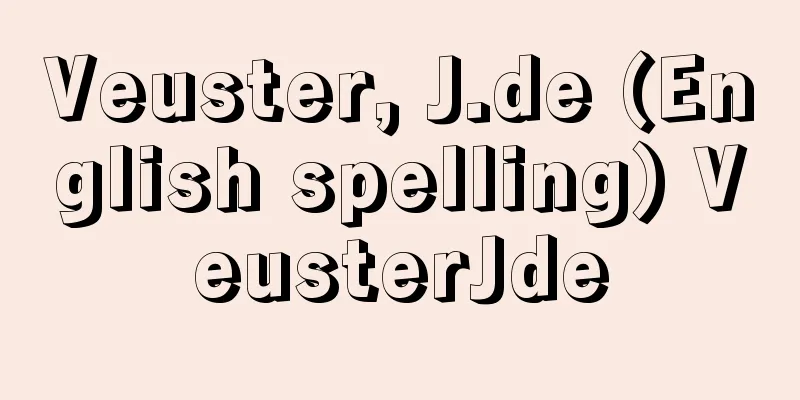Yasujiro Ozu

|
Film director. Born December 12, 1903, in Mannen-cho, Fukagawa-ku, Tokyo (now Koto-ku, Tokyo). Graduated from Mie Prefectural Fourth Junior High School (now Ujiyamada High School), he joined Shochiku Kamata Studio as a camera assistant in 1923 (Taisho 12), then moved to assistant director. In 1927 (Showa 2), he released his first film as director, "The Blade of Confession," and continued to make films mainly at Shochiku until his death in Tokyo in 1963 (Showa 38). Most of his films are depictions of contemporary families. His work "Adults' Picture Book: Born But I Mitted It" (1932), made before the Second World War, is a tragicomedy about elementary school-aged sons who go on a hunger strike in protest after learning that their father, a salaryman, is subservient to his superiors. It is a masterpiece that is both light-hearted and serious. In subsequent works such as "Dekigokoro" (1933) and "Ukigusa Monogatari" (1934), he skillfully combined light humor with serious observations of the times and humanity, and continued to portray the appearances and lifestyles of contemporary Japanese people of various classes in the home setting. In his early works, he produced a relatively large number of serious works that explored the lifestyles and morals of the poor, such as "Only Son" (1936), which dealt with the harsh conditions of families who moved from the countryside to the city, and "Ten-Ya Gentleman's Record" (1947), which vividly depicted the social conditions immediately after the war. After teaming up with screenwriter Noda Kogo to write Late Spring (1949), he began to write comedic stories about families, mainly those of middle-class or higher families. However, his works from that period, Late Spring and Autumn Wheat (1951), at first glance seem to be skilfully told trivial stories about the ups and downs of a family's happiness and sorrow over the marriage proposal of a daughter played by Hara Setsuko who is about to miss her chance at marriage. However, on closer inspection, it becomes clear that they are poignant observations of the rapid shift from stable large families in Japan to nuclear families and the resulting loneliness of people around this time. Tokyo Story (1953) takes this pathos to the extreme, while Autumn at the Kobayakawas (1961) and The Taste of Sanma (1962) add even more lightness to his works. Throughout all of these works, his subtlety and depth of human observation, as well as the strictness of his techniques, such as the so-called "low angle" technique, in which he attempted to shoot every shot in all of his works from as low a camera position as possible, have become widely known and studied around the world. In 2012, Tokyo Story came in first in the top ten world films of all time, which are voted for by film directors around the world every 10 years by Sight and Sound, the journal of the National Film Institute in the UK. He passed away on December 12, 1963. [Tadao Sato] Documents List of Director's Works The Blade of Penitence (1927) "Ozu Yasujiro - The Man and His Work" edited by the Ozu Yasujiro - The Man and His Work Publishing Committee (1972, Banyusha) " ▽ "Ozu Yasujiro's Aesthetics - Japan in the Films" by Donald Richie, translated by Yamamoto Kikuo (1978, Film Art)" ▽ "Gorgeous Shadow Plays - Ozu Yasujiro" by Takahashi Osamu (1982, Bungeishunju)" ▽ "Ozu Yasujiro Works Collection" edited by Inoue Kazuo, 4 volumes (1984-1985, Rippushobo)" ▽ "Ozu Yasujiro Complete Statements 1933-1945" edited by Tanaka Masumi (1987, Tairyusha)" ▽ "Ozu Yasujiro Complete Diary" edited by Tanaka Masumi (1993, Film Art)" ▽ Nakamura Hiroo, The Young Ozu Yasujiro (2000, Kinema Junposha) ▽ Ozu Yasujiro, Tanaka Masumi (ed.), Ozu Yasujiro: Tokyo Story and Others (2001, Misuzu Shobo) ▽ Mikami Shinichiro, The Master and the Thug: My Days with Ozu Yasujiro (2001, Bungeishunju) ▽ Tanaka Masumi, Towards Ozu Yasujiro: A Study of the History of Modernist Film (2002, Misuzu Shobo) ▽ Yamauchi Shizuo, Notes from the Shochiku Ofuna Studio: My Days with Director Ozu Yasujiro (2003, Kamakura Shunjusha) ▽ Tanaka Masumi, Ozu Yasujiro Travels (2003, Bungeishunju) ▽ David Bordwell, translated by Sugiyama Akio "Poetics of Film," New Edition (2003, Seidosha)" ▽ "Director Ozu Yasujiro," by Hasumi Shigehiko, Expanded and Definitive Edition (2003, Chikumashobo)" ▽ "Ozu Yasujiro Film Reader -- "Tokyo" and "Family," Official Program of "The Art of Ozu Yasujiro," Commemorating the 100th Anniversary of Ozu Yasujiro's Birth, New Revised Edition (2003, Film Art Co., Ltd.)" ▽ "Ozu Yasujiro and the 20th Century," by Chiba Nobuo (2003, Kokusho Kankokai)" ▽ "International Symposium Ozu Yasujiro -- Records of "OZU 2003," Commemorating the 100th Anniversary of His Birth, edited by Hasumi Shigehiko, Yamane Sadao, and Yoshida Yoshiju (2004, Asahi Shimbun)" ▽ "Ozu Yasujiro and the War," by Tanaka Masumi (2005, Misuzu Shobo) ▽ "I'm a tofu maker, so I only make tofu," by Ozu Yasujiro (2010, Japan Library Center)" ▽ "Ozu Yasujiro's 10+10 Masterpiece Films, all 10 volumes (2010-, Shogakukan)" ▽ "Hirano's Thoughts - A Personal Theory of Ozu Yasujiro," by Fujita Akira and edited by Kurata Tsuyoshi (2010, Wise Publishing)" ▽ "The Vestiges of the Empire - The Showa Era of Soldier Ozu Yasujiro" by Yonaha Jun (2011, NTT Publishing)" ▽ "Ozu Yasujiro's Gourmet Indulgence: Kanto Edition," by Kida Sho (Asahi Bunko)" ▽ "Ozu Yasujiro's Gourmet Indulgence: Kansai Edition," by Kida Sho (Asahi Bunko)" ▽ "Ozu Yasujiro's Anti-Films," by Yoshida Yoshishige (Iwanami Gendai Bunko)" ▽ "Sato Tadao, Complete Edition "The Art of Ozu Yasujiro" (Asahi Bunko)" ▽ "Memories of Ozu Yasujiro by Ryu Chishu (Asahi Bunko)" ▽ "Ozu Yasujiro's Literary Circle Friendships" by Takada Sho (Chuko Shinsho)" [References] | | | | |Source: Shogakukan Encyclopedia Nipponica About Encyclopedia Nipponica Information | Legend |
|
映画監督。明治36年12月12日、東京市深川区万年町(現、東京都江東区)に生まれる。三重県立第四中学校(現、宇治山田高等学校)卒、1923年(大正12)に松竹蒲田撮影所に撮影助手として入り、助監督に転じ、1927年(昭和2)に監督第一作『懺悔(ざんげ)の刃(やいば)』を発表、以後1963年(昭和38)に東京で亡くなるまで、主として松竹で映画をつくり続けた。そのほとんどが同時代の家庭を描いたものである。第二次世界大戦前の『大人の見る絵本 生れてはみたけれど』(1932)は、サラリーマンの父親の上役に対する卑屈さを知った小学生の息子たちが、それに抗義してハンストをやるという悲喜劇で、軽妙でありながら深刻でもある傑作である。以後も『出来ごころ』(1933)、『浮草物語』(1934)など、軽妙な笑いとシリアスな時代観察、人間観察を巧みに使い分け、また見事にない交ぜて同時代のさまざまな階層の日本人の姿と生き方を、家庭という場で描き続けてきた。初期には農村から都会に出てくる家族の過酷な状況を扱った『一人息子』(1936)や、敗戦直後の世相を活写した『長屋紳士録』(1947)など、貧しい階層の人々の生き方とモラルを真剣に追求した作品が比較的多かった。 1949年に脚本家の野田高梧(のだこうご)とシナリオでコンビを組んで『晩春』(1949)をつくってからは、主として中流以上の家族の物語を喜劇的に扱うようになる。しかし、その時期の作品である『晩春』、『麦秋』(1951)では、一見ただ、原節子の演じる婚期を逸しかけている娘の縁談に家族が一喜一憂する、というたわいのない話が巧みに語られていたにすぎないようでありながら、実はよくみると、大家族で安定していた日本の家が、この時期から急速に核家族化し、人々も孤独になっていったことを痛切に観察したものであったことがわかる。『東京物語』(1953)でその悲哀を極め、『小早川家の秋』(1961)、『秋刀魚(さんま)の味』(1962)などは、さらに軽妙さを加えている。 それらの全作品を通じて、人間観察の微妙さと深さ、また生涯の全作品のすべてのショットを、極力低いカメラ位置で撮ろうとした、いわゆる「ロー・アングル」などの技法の厳格さは広く世界に知られ、研究された。イギリスの国立映画研究所の機関誌『サイト・アンド・サウンドSight and Sound』が10年ごとに行っている、世界の映画監督の投票による世界映画史上のベストテンで、2012年には『東京物語』が第1位になった。昭和38年12月12日没。 [佐藤忠男] 資料 監督作品一覧懺悔の刃(1927) 『小津安二郎・人と仕事刊行会編『小津安二郎――人と仕事』(1972・蛮友社)』▽『ドナルド・リチー著・山本喜久男訳『小津安二郎の美学――映画のなかの日本』(1978・フィルムアート社)』▽『高橋治著『絢爛たる影絵――小津安二郎』(1982・文芸春秋)』▽『井上和男編『小津安二郎作品集』全4巻(1984~1985・立風書房)』▽『田中真澄編『小津安二郎全発言 1933~1945』(1987・泰流社)』▽『田中真澄編『全日記 小津安二郎』(1993・フィルムアート社)』▽『中村博男著『若き日の小津安二郎』(2000・キネマ旬報社)』▽『小津安二郎著・田中真澄編『小津安二郎「東京物語」ほか』(2001・みすず書房)』▽『三上真一郎著『巨匠とチンピラ――小津安二郎との日々』(2001・文芸春秋)』▽『田中真澄著『小津安二郎のほうへ――モダニズム映画史論』(2002・みすず書房)』▽『山内静夫著『松竹大船撮影所覚え書――小津安二郎監督との日々』(2003・かまくら春秋社)』▽『田中真澄著『小津安二郎周游』(2003・文芸春秋)』▽『デヴィッド・ボードウェル著、杉山昭夫訳『小津安二郎 映画の詩学』新装版(2003・青土社)』▽『蓮實重彦著『監督 小津安二郎』増補決定版(2003・筑摩書房)』▽『松竹映像版権室編・刊『小津安二郎映画読本――「東京」そして「家族」 小津安二郎生誕100年記念「小津安二郎の芸術」公式プログラム』新装改訂版(2003・フィルムアート社発売)』▽『千葉伸夫著『小津安二郎と20世紀』(2003・国書刊行会)』▽『蓮実重彦・山根貞男・吉田喜重編著『国際シンポジウム 小津安二郎――生誕100年記念「OZU 2003」の記録』(2004・朝日新聞社)』▽『田中真澄著『小津安二郎と戦争』(2005・みすず書房)』▽『小津安二郎著『僕はトウフ屋だからトウフしか作らない』(2010・日本図書センター)』▽『『小津安二郎名作映画集10+10』全10巻(2010~ ・小学館)』▽『藤田明著・倉田剛編『平野の思想――小津安二郎私論』(2010・ワイズ出版)』▽『與那覇潤著『帝国の残影――兵士・小津安二郎の昭和史』(2011・NTT出版)』▽『貴田庄著『小津安二郎美食三昧 関東編』(朝日文庫)』▽『貴田庄著『小津安二郎美食三昧 関西編』(朝日文庫)』▽『吉田喜重著『小津安二郎の反映画』(岩波現代文庫)』▽『佐藤忠男著『完本 小津安二郎の芸術』(朝日文庫)』▽『笠智衆著『小津安二郎先生の思い出』(朝日文庫)』▽『貴田庄著『小津安二郎文壇交遊録』(中公新書)』 [参照項目] | | | | |出典 小学館 日本大百科全書(ニッポニカ)日本大百科全書(ニッポニカ)について 情報 | 凡例 |
>>: Otsuma Hachirobei Mono - Otsuma Hachirobei Mono
Recommend
Kintaka - Kintaka
…Their morphologies are very similar, but the sca...
Modern Port - Kindai Kowan
…Construction of Nobiru Port began in 1978 based ...
Fairy tale (English spelling) Märchen
Generally translated as folk tales, children's...
Sesōstris (English spelling)
…Through four campaigns in Nubia, he conquered as...
Book of Jeremiah
It is counted among the three major prophetic book...
Ishihara Color Blindness Test Chart - Ishihara Color Blindness Test Chart
…He studied in Germany, and in 1922, while still ...
Kawajiri
During the Heian and Kamakura periods, a stopover ...
Uraku style
This is one of the schools of tea ceremony founde...
Triad elements
…As a result, it became clear that the properties...
Jyogyodo - Jyogyodo
〘Noun〙 The hall where the Jōgyō-samai is practiced...
Botha, PW (English spelling) BothaPW
…After the war, Britain sought reconciliation wit...
Ohako
It is an abbreviation of "hakoiri," whi...
Latreillia valida (English spelling)
...Its feeding habits and reproduction are unknow...
Wooden bridge - Mokkyo
Also called "kibashi." A bridge whose gi...
Gangrenous balanitis - Gangrenous balanitis
…General symptoms such as fever are not usually s...





![Katholikos (English spelling) [Greek]](/upload/images/67cb39e091110.webp)



